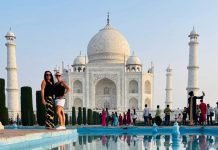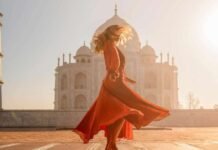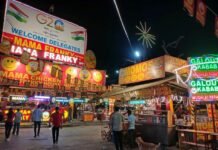7 Incredible Tips for the best Photos of the Taj Mahal
Here are 7 incredible tips for capturing the best photos of the Taj Mahal:
Timing is everything: As mentioned earlier, the best time to capture the Taj Mahal is early or late afternoon. During these times, the light is softer and warmer, creating a more flattering and dramatic effect. Additionally, the crowds are thinner, allowing you to capture unobstructed shots of the monument. Taj Mahal photography captures the iconic monument’s beauty, history, and cultural significance in stunning visual form.
“Photos of the Taj Mahal showcase the monument’s stunning beauty, intricate craftsmanship, and rich cultural heritage.”
Find unique angles: The Taj Mahal is a popular photography subject, so capturing a unique shot can be challenging. One way to stand out is by experimenting with different angles and perspectives. Try shooting from a lower angle, such as lying on the ground, or from a higher vantage point, such as a rooftop or a nearby hill.
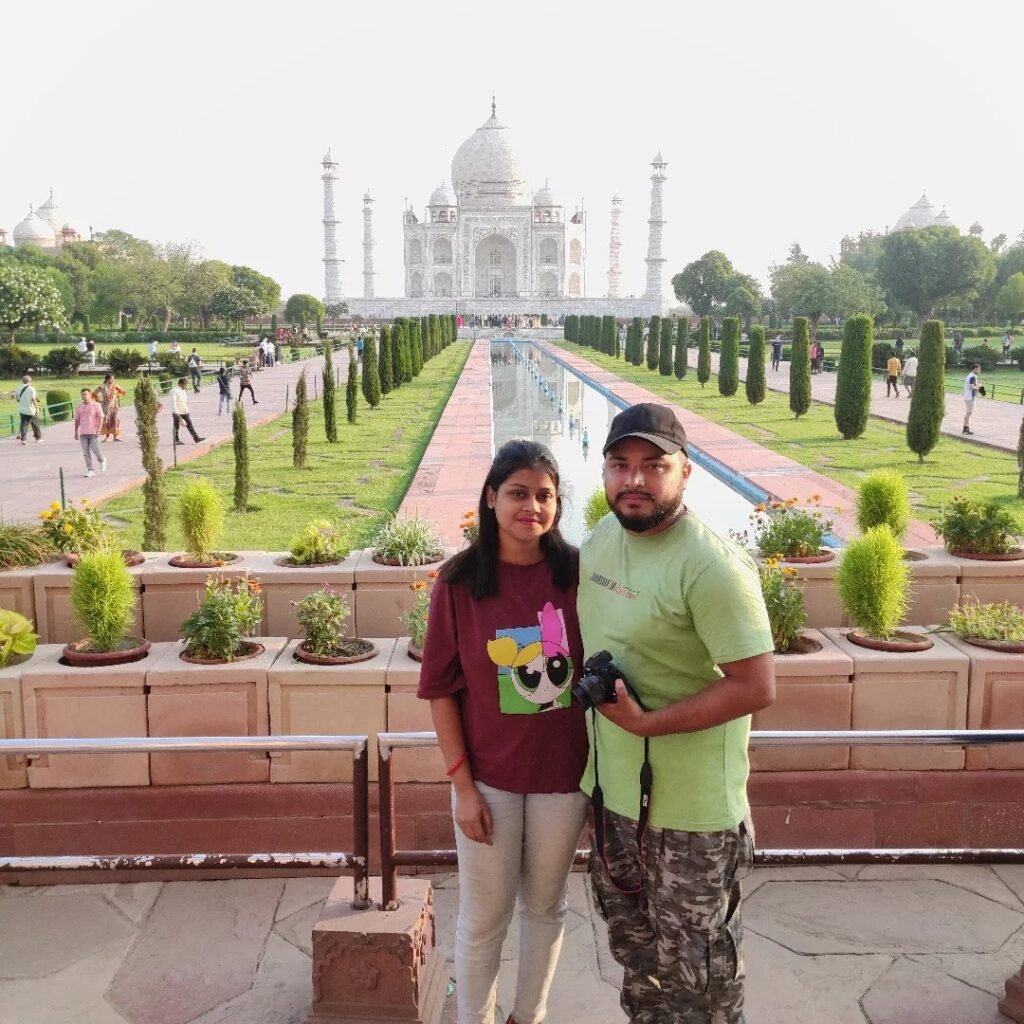
Delhi Agra one day tour by Car – Book with Local Expert From ₹ 6,500
Delhi Agra one day tour by Car Inclusive of neat and clean Car with Experienced Driver + Local Live Guide on Additional cost – Check Out More!
View DetailsPlay with reflections: The Taj Mahal’s reflection in the nearby pool is a classic shot, but you can also look for other reflective surfaces to capture interesting compositions. For example, you can look for puddles of water after a rain shower or capture the reflections on the marble floors.
Include people for scale: Including people in your photos can provide a sense of scale and add interest to your shots. Look for people interacting with the monument, such as posing for photos or admiring the view, and try to capture their emotions and reactions.

Look for details: The Taj Mahal is a masterpiece of craftsmanship and design, and it’s full of intricate details and textures. Look for close-up shots of the marble, the intricate carvings, and the colorful inlays to capture the monument’s beauty in detail.
Use the rule of thirds: The rule of thirds is a basic composition technique used in photography, where the frame is divided into a grid of nine equal parts. By positioning the Taj Mahal at one of the intersections of the grid lines, you can create a more balanced and visually appealing photo.
Experiment with editing: Post-processing can help enhance your photos and bring out the colors and details. Experiment with different editing techniques, such as adjusting the contrast, saturation, and sharpness, to create a more polished and professional-looking photo.
By following these tips and getting creative with your photography, you can capture breathtaking photos of the Taj Mahal during your Agra Tour that truly capture its beauty and grandeur.
“The best photos of the Taj Mahal capture the monument’s stunning architecture, intricate details, and majestic presence.”
What are some good spots to capture the Taj Mahal from?
There are several good spots to capture the Taj Mahal from, each offering a unique perspective and composition. Here are some of the best spots to consider:
The reflecting pool: The reflecting pool in front of the Taj Mahal is one of the most iconic spots for capturing the monument. You can capture the Taj Mahal’s reflection in the still water, creating a stunning mirror image.
The main entrance: The main entrance to the Taj Mahal, known as the Darwaza-i rauza, is another popular spot for capturing the monument. You can use the archway to frame the Taj Mahal and create a sense of depth.
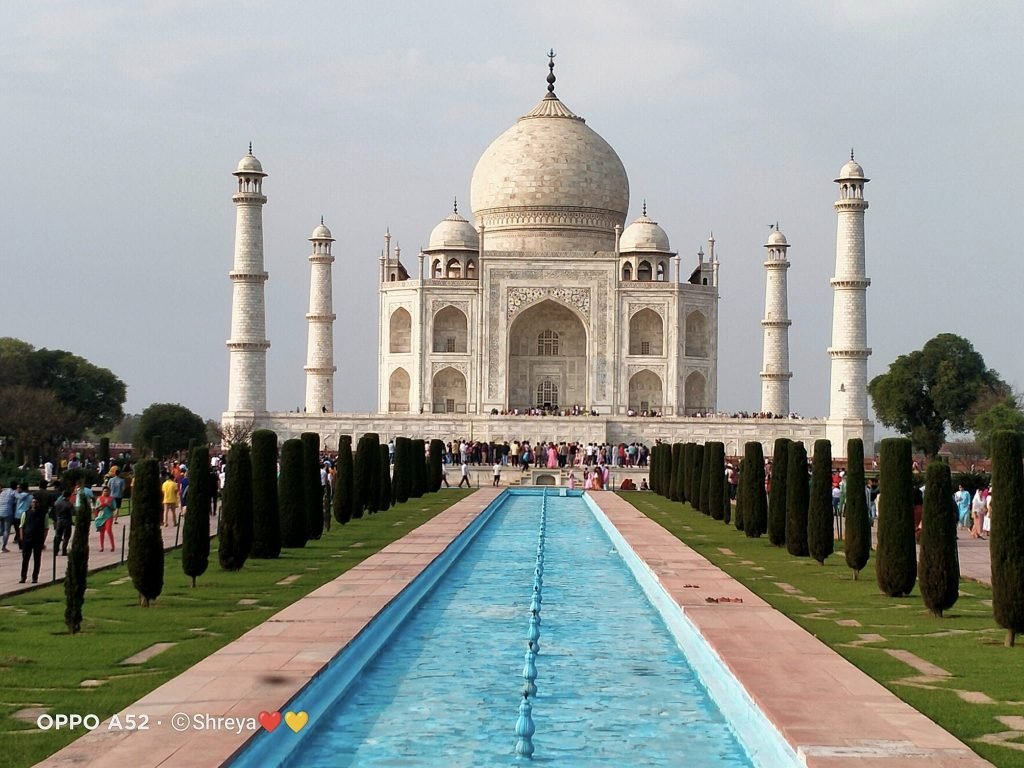
The gardens: The gardens surrounding the Taj Mahal are a great place to capture the monument from a distance. You can use the gardens to create a foreground element and add depth and context to your photos.
Mehtab Bagh: Mehtab Bagh is a garden located across the Yamuna River from the Taj Mahal. From here, you can capture a panoramic view of the monument and its surroundings, including the river and the hills in the distance.
Agra Fort: Agra Fort is another UNESCO World Heritage site located in Agra, and it offers a great vantage point for capturing the Taj Mahal from a distance. You can capture the Taj Mahal in the background, with the fort’s red sandstone walls in the foreground.
By exploring these different spots and getting creative with your compositions, you can capture stunning photos of the Taj Mahal that truly showcase its beauty and grandeur.
“Stunning photos of the Taj Mahal showcase the monument’s breathtaking beauty and cultural significance.”
What is the best time of day to capture the Taj Mahal?
The best time of day to capture the Taj Mahal is either early in the morning or late in the afternoon. During these times, the light is softer and warmer, creating a more flattering and dramatic effect on the monument. Additionally, the crowds are thinner during these times, allowing you to capture unobstructed shots of the Taj Mahal.
If you’re planning to capture the Taj Mahal during sunrise, you’ll need to arrive early to secure your spot, as it’s a popular time for photography. The gates typically open 30 minutes before sunrise, so plan to arrive at least 45 minutes to an hour before that to give yourself enough time to get in line and find a good spot.

If you’re planning to capture the Taj Mahal during sunset, be aware that the gates close 30 minutes before sunset, so plan accordingly. You’ll need to arrive at least a few hours before sunset to give yourself enough time to explore the monument and find a good spot for photography.
Ultimately, the best time of day to capture the Taj Mahal depends on your personal preferences and photography goals. Whether you’re capturing the monument at sunrise, sunset, or any time in between, be sure to plan ahead and arrive early to make the most of your photography experience.










